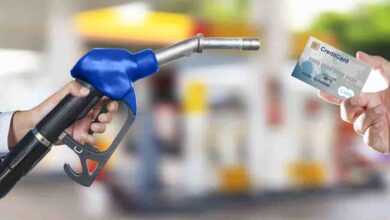How to Check Water Pumps in Hydronic Heating Systems?
For effective maintenance of your church’s hydronic heating system, especially with winter looming, it’s essential to center your efforts on grants for church heating systems. This funding can support repairs or upgrades. Our guide emphasizes assessing your water pump, which is crucial for system functionality. Ensure the heating system is powered off before inspection. Essential tools include screwdrivers, a multimeter, a flashlight, and pliers. Check the pump for damage, leaks, corrosion, or loose connections. Identifying these issues early and understanding grant opportunities is critical to managing maintenance costs efficiently.
Gather the Necessary Tools and Equipment
Before you begin, ensure you have all the necessary tools and equipment. You’ll need a wrench, a pressure gauge, and a flashlight to dive into the depths of your hydronic heating system like a fearless underwater explorer.
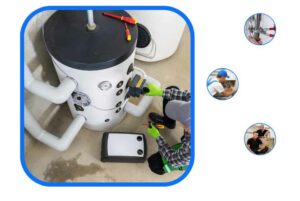
These essential tools will ensure you can properly check the water pumps in your hydronic heating system. The wrench will come in handy for loosening and tightening connections, while the pressure gauge will allow you to measure the pressure within the system. The flashlight will help you navigate dark and tight spaces, enabling you to locate the water pumps effectively.
By being prepared with the necessary tools and equipment, you can confidently proceed with checking the water pumps in your hydronic heating system.
Read More:- How to Get Funding for Church Building?
Turn Off the Power Supply
To ensure your safety, make sure you’ve switched off the power supply before proceeding. This step is crucial to prevent any accidents or injuries while checking the water pumps in your hydronic heating system.
Start by locating the power switch or circuit breaker that controls the power supply to the system. Flip the switch off or turn off the circuit breaker to cut off the electricity.
Double-check to ensure the power is off by testing the system with a voltage tester. When you’re confident that the power supply is entirely disconnected, you can inspect and check the water pumps in your hydronic heating system.
Safety should always be the top priority when working with any electrical equipment.
Inspect the Pump for any Physical Damage or Leaks
When inspecting the pump, one crucial aspect is looking for any visible signs of physical damage or leaks.
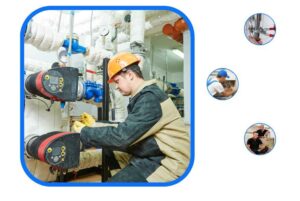
- Start by examining the pump closely and check for any cracks, dents, or signs of wear and tear.
- Look for any loose or missing parts, such as screws or bolts, that indicate damage.
- Inspect the pump for leaks by checking for water puddles or moisture around it or on the floor below it.
If you notice any physical damage or leaks, addressing them promptly is essential to prevent further damage to the pump and the hydronic heating system.
Check the Pump’s Impeller
Make sure you take a close look at the pump’s impeller, as it plays a crucial role in ensuring the smooth operation of your system and can significantly impact its efficiency and performance.
The impeller creates the necessary pressure and water flow within the hydronic heating system. Check for any signs of damage, such as cracks or chips, as this can affect the impeller’s ability to move water effectively.
Examine the impeller for any debris or buildup accumulated over time. This can hinder the impeller’s movement and reduce its overall performance. Clean any residue or buildup carefully to ensure optimal functioning.
Lastly, ensure the impeller is securely attached to the pump shaft and rotates freely without obstructions.
By thoroughly inspecting and maintaining the pump’s impeller, you can help prolong the lifespan of your hydronic heating system and guarantee its efficient operation.
Test the Pump’s Motor
The pump’s motor is a crucial component that should be tested to ensure your system’s smooth and efficient operation.
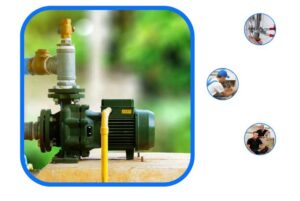
To test the motor, start by turning off the power to the pump and disconnecting it from the power source.
- Inspect the motor for visible damage or wear, such as loose wires or burnt-out parts.
- Next, use a multimeter to check the motor’s resistance by connecting the meter’s probes to the motor’s terminals.
- A reading within the manufacturer’s specified range indicates that the motor functions appropriately. If the engine fails the resistance test, it needs to be replaced.
- You can test the motor’s rotational movement by manually turning the impeller.
A smooth and easy rotation indicates that the motor is in good condition. If you experience any resistance or hear unusual noises, this means a problem with the engine.
In such cases, it is recommended to consult a professional for further inspection and potential repairs.
Ensure Proper Alignment and Lubrication
To ensure your system’s smooth and efficient operation, it’s crucial to properly align and lubricate the pump’s motor.
Start by checking the alignment of the motor shaft with the pump shaft. They should be perfectly aligned without any misalignment or offset. Use a straight edge or laser alignment tool to ensure accuracy.
If misalignment is detected, adjust the motor or pump accordingly until they are correctly aligned.
Once the alignment is correct, it’s important to lubricate the motor bearings regularly. Follow the manufacturer’s recommendations to apply a rare drop of oil or grease to the bearings. This will help reduce friction and wear, prolonging the motor’s lifespan.
Remember to check the lubrication levels periodically and replenish if necessary.
By ensuring proper alignment and lubrication of the pump’s motor, you can optimize its performance and extend the overall lifespan of your hydronic heating system.
Read More:- What are The Disadvantages of Hot Water Heating Systems?
Verify Water Flow and Pressure
Now that you’ve ensured proper alignment and lubrication of your water pump in the hydronic heating system, it’s time to move on to the next step: verifying water flow and pressure.
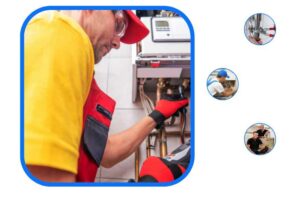
This is crucial in maintaining the efficiency and effectiveness of your heating system. By checking the water flow, you can ensure that the pump circulates the water properly throughout the system. Monitoring the water pressure will allow you to identify potential issues that hinder the pump’s performance, such as blockages or leaks.
You can use a pressure gauge and flow meter to measure and compare the values against the recommended specifications to verify water flow and pressure. This will help you determine if any adjustments or repairs are needed to optimize the performance of your hydronic heating system.
Clean and Maintain the Pump
Ensure you keep your pump clean and well-maintained for optimal performance and longevity.
Regular cleaning is essential to prevent the build-up of debris and sediment, which can clog the pump and hinder its efficiency. Start by disconnecting the power supply and removing the pump cover. Use a soft brush or cloth to gently clean the impeller and pump housing, removing dirt or residue. Please pay special attention to the impeller blades, which can quickly become clogged. Next, inspect the pump for wear or damage, such as cracks or leaks. If you notice any issues, it’s essential to address them promptly to prevent further damage. Lubricate the motor bearings and check the belt tension, adjusting it if necessary.
Finally, perform regular maintenance tasks, such as checking the pump’s temperature and pressure levels and replacing worn-out parts.
Keeping your pump clean and well-maintained ensures that your hydronic heating system operates smoothly and efficiently.
Conclusion
In conclusion, checking the water pumps in hydronic heating systems is a crucial maintenance task that shouldn’t be overlooked. By following the steps mentioned above, you can ensure that your pump is in good working condition, maintaining the efficiency and effectiveness of your heating system. Gather the necessary tools, turn off the power supply, inspect for damage or leaks, and check the impeller and motor. Ensure proper alignment, lubrication, water flow, and pressure. Regular cleaning and maintenance are essential for a longer lifespan and fewer issues. Neglecting pump checks can lead to reduced efficiency, increased energy consumption, and system failures. Take the time for these checks to enjoy a warm and cozy home all winter, ensuring your comfort and satisfaction.
